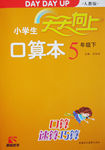题目内容
Writing an article for your school newspaper can be exciting and rewarding, especially when you proudly see your name in print.
Decide on a topic.1.If you plan to write a news article for a monthly newspaper, you will need to take into consideration whether the topic will be relevant before printing. To get ideas for stories, listen to your fellow students and find out what has them talking. Follow developments within your school and community to get information on what would interest your readers.
Do your research. There is an old saying in law that a good lawyer never asks a question that they don’t know the answer to. 2. To sum up, the more, the better.
Attract the readers with a lead. As the beginning of a newspaper story, a lead has to be direct, but it does not mean you don’t need to entertain the reader as well. 3.Your lead must be short, but it must also state as many of the essential parts of you story as possible.
Consider the 5 Ws and H. These are the meat and potatoes of your news articles. You article must answer all of these questions: Who, What, When, Where, Why and How. Once you have answered these things, you can feel confident. 4.
Write, edit, rewrite and repeat as necessary. So, much about having a successful final product is about being willing to spend time and effort in editing and reviewing process. 5.After that, make changes as a result. Having taken some useful suggestions, you are to make your article readable not only for their content, but also for their quality.
A. Think about what is happening on campus.
B. You have effectively informed your readers.
C. Get them interested with an interesting beginning.
D. Do not be afraid to accept positive comments.
E. News articles are suitable for the date of publication.
F. Take note of anything particularly unusual.
G. Try to find out as much as you can on the subject.
 天天向上口算本系列答案
天天向上口算本系列答案
